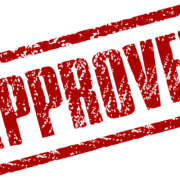January 31st is right around the corner. If you’re an employee, you should receive your W2 soon. Or, if you are an independent contractor, one or more 1099s should likewise arrive. (If you’re an employer, remember that W2/W3 and 1099/1096 filings are due soon, too!) Receiving a W2 or 1099 usually triggers most of us to start preparing our taxes, or at least to begin gathering the information our tax preparers will need from us.
This year, employers and employees face some unique tax circumstances and a number of new rules. We outline a few of these new rules and other noteworthy changes below.
• You can deduct your PPP forgiveness expenses – The original C.A.R.E.S. Act left many items subject to interpretation. As such, the IRS originally took the position that businesses would not be able to deduct the expenses paid for with funds provided by PPP loans, if those loans were forgiven. They contended that companies “double-dipped” if they had tax-free income and subsequent deductible expenses. The AICPA (and others) lobbied against that ruling, and thankfully, Congress listened. Before you apply for forgiveness, please read this.
• There is a bigger meal deduction – Allowing businesses to deduct meals is nothing new. However, the IRS has, to this point, limited the percentage of the expense that was allowable. Now, though, you may deduct the entire amount you spend on business meals for 2021 and 2022, provided they take place at a restaurant. Essentially the government gives you a tax benefit when you support restaurants with your patronage. That’s a win-win! If you’re a restaurant owner, it’s probably a good idea to remind your customers of this new benefit!
• You can donate more to non-profits (and if you are a non-profit, then you can get more donations!) – The government has extended the above-the-line charitable contribution through 2021 at $600 for those married filing jointly and $300 for other filers. In other words, taxpayers will not have to itemize their deductions to take advantage of this benefit. You can take the standard deduction and deduct up to $600 in charitable giving from your taxable income. Last year, you could deduct up to $300 above-the-line for charitable contributions, so this doubles the benefit! We believe that generosity is always rewarded, but this year provides yet another incentive!
• You can take advantage of the employee retention tax credit through 2026 – If you are fortunate enough to have the capacity to hire new workers, the government offers you added incentive to do so. This credit can be up to $9,600 and applied against the taxes you owe. To qualify, you will need to hire certain long-term unemployed workers, those on welfare, and veterans. This existing law has been extended for five years to 2026. Talk to us about taking advantage of this credit before you make your next hire.
• Social security tax deferral has been extended – Employees generally pay about 7-8% of their income in payroll taxes, and employers must match that amount. While they still have to pay the taxes, employers can now defer their share of social security taxes through March 2021 and pay those amounts back as late as the end of 2022. Extending the payment deadline doesn’t relieve you of your obligations, but it does provide an interest free loan from the government, should you choose to take advantage of this. Be careful, though, as you want to make sure you have the resources to pay these taxes when they’re due!
The changes keep coming, and we will continue to try to keep you updated.
And remember, you’re not alone! Our team is available to help you plan and prepare all your tax filings. Let us help! Contact us today to schedule a consultation.










